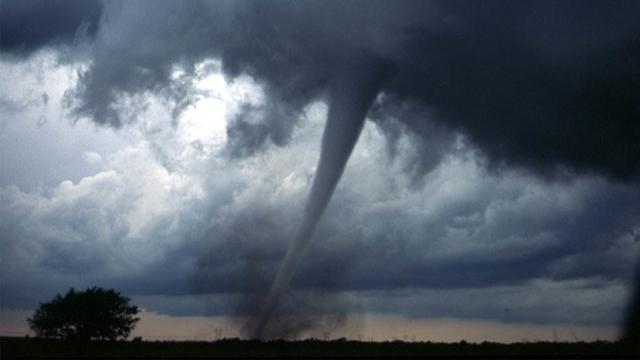New research results show how sound below the range of human hearing can help scientists predict and track tornadoes.
Predicting tornadoes is crucial for saving lives. Today, meteorologists rely on Doppler radar signatures as well as context clues, combined with reports from eyewitnesses on the ground. The technology has led to a major increase in warning time around tornadoes over recent decades. But the National Weather Service still reports at least a 50 per cent false alarm rate for issued tornado warnings as of 2014, and the rate might be even higher. Now, scientists are getting serious about using infrasound—sound with a frequency lower than human ears can hear—as a means to supplement present-day methods for tornado detection.
[referenced url=” thumb=” title=” excerpt=”]
Elbing and his collaborators started to detect infrasound signature from a tornado in Oklahoma, eight minutes before it formed, and the characteristic signal showed up four minutes before touchdown, according to a press release about the work. Radar did not detect the tornado. The researchers presented their work at the American Physical Society’s Division of Fluid Dynamics 72nd Annual Meeting in Seattle. They detected these signatures using multiple infrasound microphones, which are more sensitive to low frequency noise and encased in a way that reduced wind noise.
Elbing explained to Gizmodo that there are a number of potential advantages that the addition of infrasound for detecting tornadoes can bring. Radar doesn’t work if there’s an obstacle like a mountain between the radar detector and the source but infrasound does. Some of the deadliest tornadoes occur in the Southeast, but storm chasers don’t visit this region to serve as eyewitnesses as they do in the Great Plains. That points to the need for a second set of eyes (or ears as the case may be) in that region. Using radar signatures combined infrasound data to issue warnings could help cut down on false alarms.
Elbing said it’s still not understood what produces the sound, and his team is still working out how to separate the signal from the noise. Another impediment to using infrasound for warning purposes is that sound information travels more slowly than radar information. Sound from a tornado 20 kilometers (12.4 miles) away from the microphone might take a full minute before going detected, Roger Waxler, University of Mississippi physicist not involved in this particular work, told Gizmodo.
But scientists working in this field are hoping that a few more years of research and funding will produce an infrasound detection system. Waxler’s own team has even found different sonic signatures for tornadoes before and after they touch down. The sound work is just one of a handful of ways researchers are trying to get a better grip on why some storms spawn tornados and other don’t. But the end goal is the same.
“We’re really enthusiastic about this,” said Waxler. “We think it can save lives, quite frankly.”
